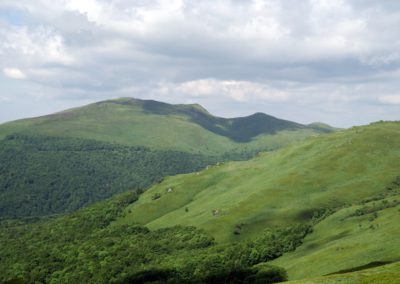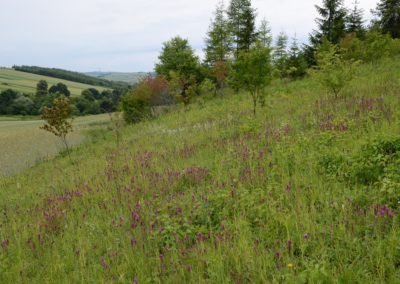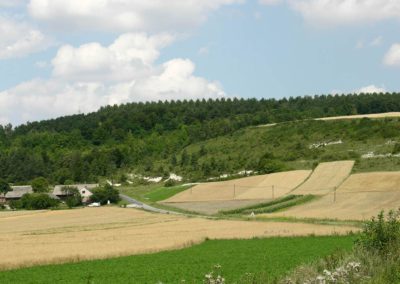FIELD SESSIONS
The programme of the 58th Congress includes 7 field panels. They will be held at some of the most interesting wildlife areas in southern Poland: 4 national parks, landscape parks (the Nida Basin), and nature reserves, as well as in the western part of the Sandomierz Basin. We would also like to show you a unique industrial region on the Siliesia-Kraków Upland, which is protected within the framework of the Natura 2000 network.
National parks, that is the Babia Góra National Park, Gorce National Park and Bieszczady National Park, represent important phytogeographical units of the Polish Carpathians, while the fourth one, the Ojców National Park, situated within the Kraków-Częstochowa Upland, is characterised by extraordinary landscape and natural features. The Miechów Upland and Ponidzie belong to three distinct areas in Poland populated with rare and valuable Pontian and Panonnian species comprising the xerothermic calcareous grasslands. In the Niepołomice Forest, that is a large forested area located in the Sandomierz Basin, with several well-preserved ranges and nature reserves, the panel participants will have an opportunity to become familiar with, for example, the most attractive parts of the Forest. The Olkusz area, on the other hand, is Poland’s only calamine grass habitat.
We offer the following field sessions:
Babia Góra National Park. 1-day panel; mountain hike, difficult. Climb to the top of Babia Góra (1,725 m a.s.l.), the highest peak of the Polish Beskidy Mountains, a hike across three altitudinal zones – montane, subalpine, and alpine. Particular attention will be paid to the presentation of arctic and alpine plant species, moss and lichen species.
Date: 5 July, limit of participants: 45, cost: to be announced.
Ojców National Park. 1-day panel; easy trail. The Park features unique landscape values, rich flora, as well as highly diversified mosaic plants habitats – natural vegetation (forests and rocky grasslands) coexist with semi-natural xerothermic grasslands and meadows. A ca. 6 km long hike along the bottom of the picturesque Prądnik River Valley and along the peaks; includes a visit to the Jaskinia Ciemna cave.
Date: 6 July, limit of participants: 45, cost: to be announced.
Olkusz Ore Area – an industrial region with a unique natural environment. 1-day panel; easy trail. The panel’s programme includes a presentation of, among others, diversification of grasslands on calamine spoil tips (exemplified by ‘Biscutella’ and ‘Armeria’ habitats), a visit to an interactive exhibition on the region and the history of zinc and lead mining in Bukowno, as well as a visit to a substitute habitat of an endemic Cochlearia polonica in the spring area of Centuria.
Date: 6 July, limit of participants: 40, cost: to be announced.
Natural environment of the Gorce National Park. 1-day panel; medium to difficult trail. The participants will become familiar with the key natural features of the southern part of the Gorce range – the Turbacz Range, in particular, vegetation and macromycete biomes. They will also learn about the history of the formation, present diversification, hazards and issues concerning protection of semi-natural meadow habitats on montane glades.
Date: 6 July, limit of participants: 45, cost: to be announced.
Niepołomice Forest – sustainable forest management and protection of the richness of the natural environment. 1-day panel; easy trail, flat terrain. Along the trail there are 4 main habitats: the ‘Lipówka’ Reserve within a complex of deciduous forests (northern), ‘Osmuda regalis’ within the southern complex (coniferous forests), as well as a Field Research Station of the Institute of Botany of Polish Academy of Sciences in Szarów, and Niepołomice – an architectural gem among the towns of Małopolska.
Date: 5 July, limit of participants: 40, cost: to be announced.
Vegetation of the Bieszczady Mountains, Sanok-Turka Mountains and the Przemyśl Foothills. 3-day panel with accommodation in Ustrzyki Górne; mountain trail, difficult. The programme includes a visit to the ‘Mount Sobień’ Reserve in the Słonne Mountains, a climb to the top of Mount Tarnica (1,346 m a.s.l.) and Mount Bukowe Berdo (1,311 m a.s.l.); vegetation forests and grasslands – east-Carpathian species; vegetation of raised and transitional bogs; the ‘Turnica’ Forest Reserve within the Suchy Obycz Range.
Date: 5 – 7 July, limit of participants: 45, cost: to be announced.
Miechów Uplands and Ponidzie. 1-day panel; easy trail, presenting the unique natural value of the Nida Basin – Miechów Uplands and the Połaniec Basin. The most precious elements of vegetation of the area include diversified xerothermic grasslands. During the panel, the participants will have an opportunity to visit three Natura 2000 areas with well-preserved natural grasslands. One of them, the ‘Wały’ Reserve features Poland’s largest Carlina onopordifolia habitat – the plant featured in the coat of arms of the Polish Botanical Society. Date: 5 July, limit of participants: 45, cost: to be announced.
***
Herbarium murorum cracoviensis – or plants in Kraków’s architecture. A 2–3-hour long walks around the city in search of floral motives and ornaments on the facades of sacral and secular architectural objects. Guides: Professor Alicja Zemanek, PhD (Institute of Botany, Jagiellonian University), Professor Bogdan Zemanek, PhD (Institute of Botany, Jagiellonian University).
Date: 1 July, limit of participants: 30, without payments




